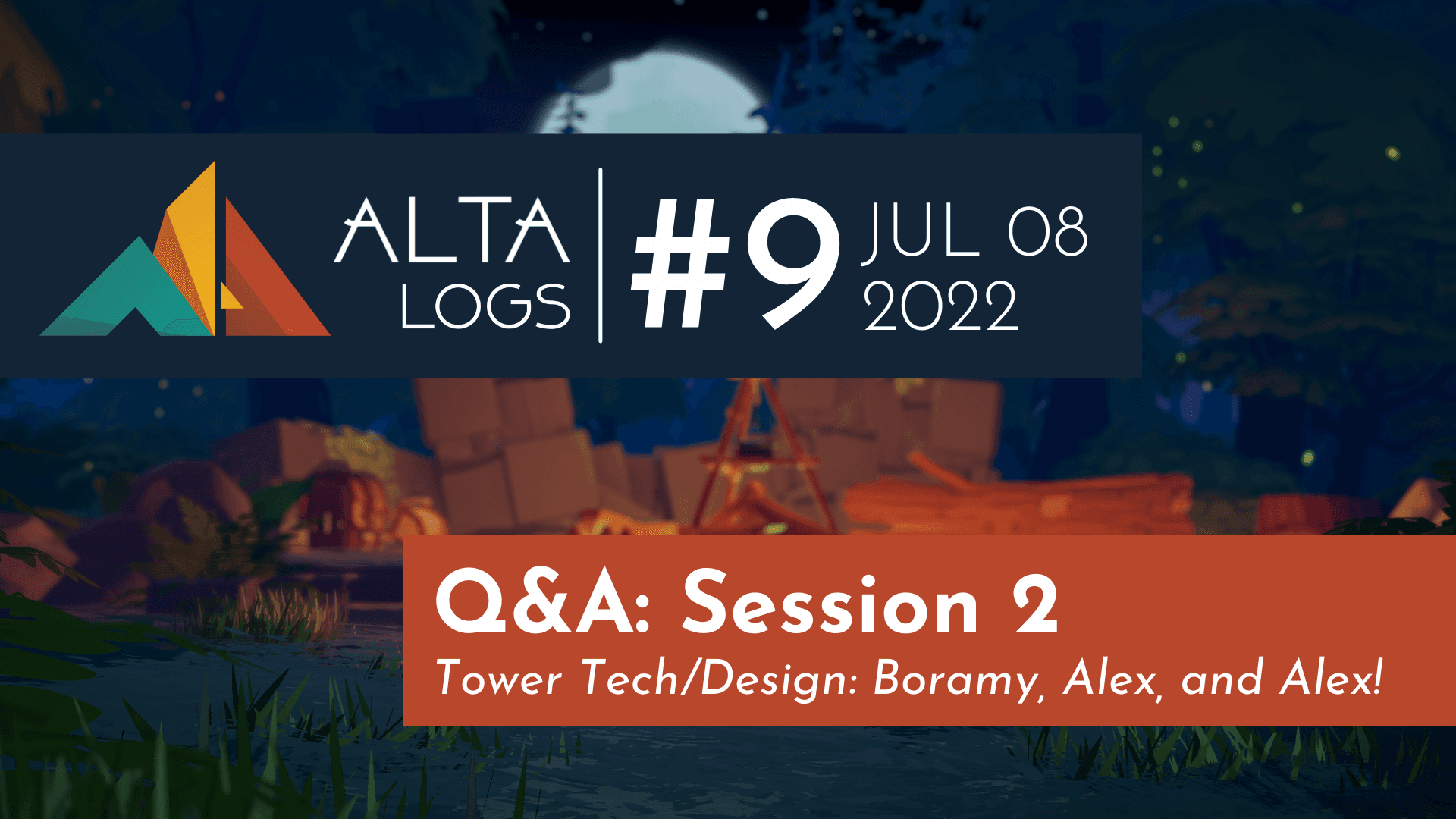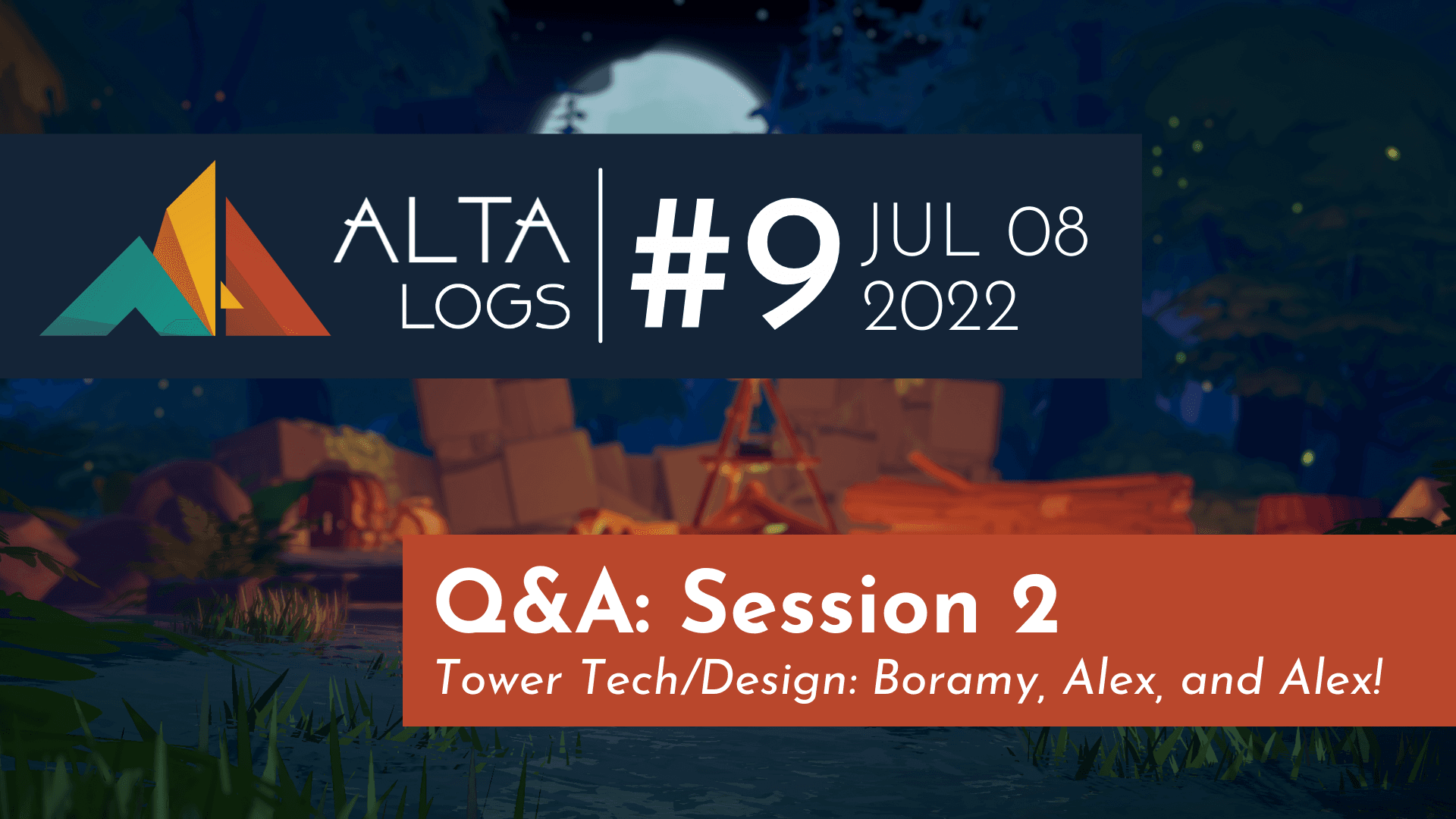Alta Logs #9: Q&A Session 2
Good day, Townsfolk, and Happy Friday! In this Log, we are diving a little deeper into the production process on Tower, and what kind of work we have been putting in to get us to where we are currently. I've written up a few key questions that ya'll might be interested in, and some Alta folks from Design, Art, and Tech have taken the time to give some insight. Here's some info on who's who:
Alright! Now that everyone has been introduced, let's get into the questions.
Boramy: Since the Tower previously existed, the first step was figuring out what changes we were going to make. This involved the Design team analyzing any problems with the current Tower we wanted to address. Then, a proposal is worked on to solve those, which leads towards concepting, prototyping, and greyboxing. The concept phase looks at level design changes, while prototyping looks at system/mechanic changes, and greyboxing actually puts those pieces together. Then, we move onto an art phase, where the 3D Art team embellishes the level design and works on necessary effects. Audio then gets a pass before our Quality Assurance team makes sure everything works properly. There are usually a few iterations back and forth out of QA before the update eventually launches.
Alex D: Currently, the Tower is in the Tech Art phase. This is where the Art department ensures that all assets and embellishments of the Tower are within the expected performance targets. Meanwhile, the Audio team is also working on some unique SFX that are specific to the Tower, and soon our amazing QA team will have their hands on it for pre-launch testing.
Boramy: With letting players return to the latest checkpoints (if they've previously stopped and now wish to continue), we had to decide what the most common method of doing that would be. Between interacting with checkpoints to unlock them and using their corresponding teleporters, deciding which step marks your return destination was tricky. Do you return to the latest teleporter, even if you haven't interacted with the corresponding checkpoint? Or do you return to the latest checkpoint even if you left the tower on a different teleporter? In the end, we surmised that you would likely always want to return to the latest checkpoint, but in doing so limiting unconventional use cases.
Boramy: As we've added new quality of life interactions with the Tower, communicating details about the climb has been more important. As a result, we've done tons of work on special effects to make the events across the tower experience more clear. We've also been more focused on increasing the amount of people that can complete the tower, whilst still maintaining the challenge that PC players are used to in the previous iteration. Players will find that the start eases in more, but the rest of the tower maintains its daunting pressure.
Alex D: As a newcomer, I hadn't had the opportunity to work on the original development of the PC Tower, but I can share from other experience that it is always a technical challenge to port a feature from one platform to another.
Boramy: Most of what players do in the tower is fall-- And then they climb up higher. So, the gameplay interactions are fairly limited despite the size of the Tower. In terms of technical aspects, though-- Getting a huge bulk of the Tower's geometry on Quest was a case of focused elbow grease to optimize the static assets.
Alex O: When the tower was initially built, it had a lot of building blocks overlapping on top of each other. This wasn't a problem on the PC version of the game, and even when re-creating it in Unity. But Quest renders things quite differently. We experienced a lot of z-fighting, which meant the Tech Art team had to move some things around carefully– we want to make sure we get things just right.
Boramy: I think one of the core changes to the Tower is the new Start/Stop Progress capabilities. Previously, the Tower was an all or nothing journey-- But with this new iteration, we allow you to stop when you want, return to Town to play the game in other ways, and then keep your progress when you return to the Tower.
Alex O: We've added new VFX to compliment the design changes and communicate mechanics more visually. We also wanted to use this opportunity to subtly communicate some ~Lore~ about the tower. We’re doing a few fancy tricks to make these effects more interesting, and so it took us a bit more time to implement, iterate, and test them.
Alex D: Definitely an improvement in quality of life for our Climbers! Being able to take a break from the Tower's challenge is pretty epic-- Now players can stop at any check point, leave the tower, do whatever they want, and start right where they left off once they decide to come back.
That’s all for Round 2! This won't be the last ever Q&A-- So don't worry if you still have more questions about ATT and our Dev Processes. Hopefully, however, some of these responses gave a little insight into what we've been working on since announcing Tower, the process of developing the feature, and the considerations and thoughts we've put into it for all of you. Everyone has their noses down, and I'll be updating you with more progress as I'm able. By the way... Supporters-- Keep an eye out for some Sneak Peeks as we continue production! ;)
As always-- Thank you and much love, Townies!

Join our Discord for more updates, events, and chats!

